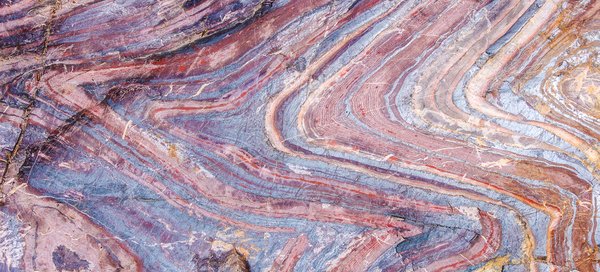
A new study identifies sources of iron found in Banded Iron Formations (or BIFs) that were formed 2.5 billion years ago. The BIFs are sedimentary deposits formed at the bottom of Precambrian oceans on Earth, and contain distinctive layers of material. BIFs are reddish in color due to the iron they contain, and these deposits are a major source of iron used by humankind today.
Previously, much of the iron in BIFs was thought to come from mineral-rich water released by hydrothermal vents. The new study indicates two sources of iron in BIFs from Western Australia. The first source is hydrothermal systems on the ocean floor. The second source is iron metabolized by microorganisms living along the continental shelves. The researchers suggest that a large amount of continental iron was released into the ancient ocean through microbial iron reduction. The study shows that iron in BIFs resulted from the interplay between biological and abiologic processes.
The paper, “Biologically recycled continental iron is a major component in banded iron formations,” was published in the journal PNAS. The study was supported by the NASA Astrobiology Institute.
